Convent of Christ!
- Tags:
 What to see Tomar,
Tomar,
Portugal
What to see Tomar,
Tomar,
Portugal
- Telephone: 249 315 089
- Website: http://www.conventocristo.pt/
An architectonic jewel in Tomar!
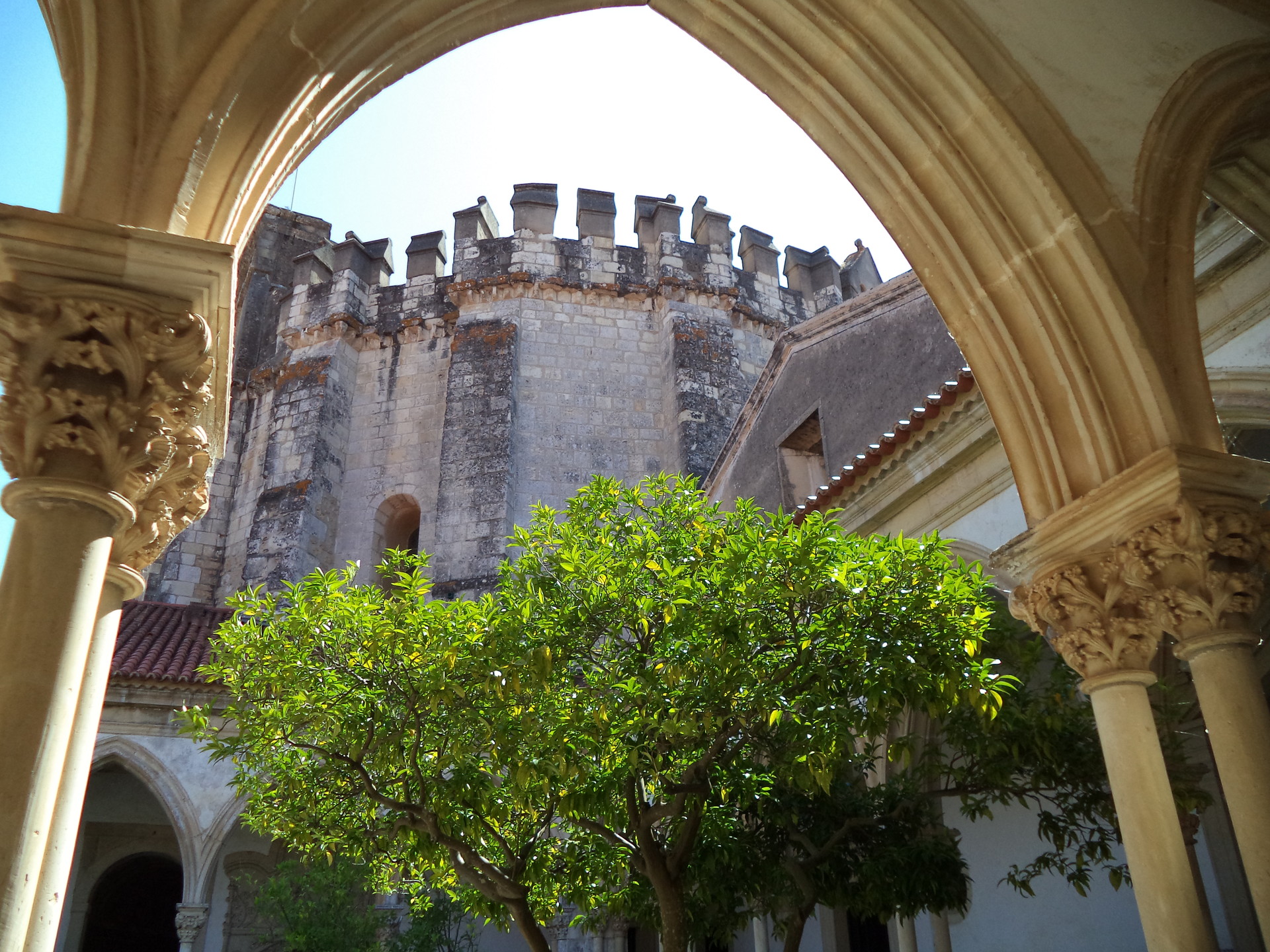
View of the Cloister - July 2016
What is this about?
The Convent of Christ in Tomar is a complex of important architectonic elements, that in a positive way gives a view of the Portuguese Architecture. Its a through back to the period of the Christian Reconquer of the Iberian Peninsula, and also the importance of the Religious Orders in the defense of the territory.
The Castle and the Charola started to be built in the middle of the 12th century, during D. Afonso Henriques Reign and then they were given to the Templar Knights, a religious order, that during years take up an important role in the Portugal Kingdom's formation. The Charola is a wonderful church, like others in Portugal, it was inspired in the Santo Sepulcro's Church, that is known for its circular form.

View from the Charola - July 2016
The Convent is been there for centuries, and had a major boost with the Infant D. Henrique, during the Discovery Period, and then with the King D. Manuel I, that like happened in Batalha, made a lot changes in the Convent, decorating it with the Gothic Manueline Style, as it's known today.
How to arrive?
By car, coming from Lisbon, you just need to take the highway A1, up to kilometer 93, or from Porto to the kilometer 198. By train, coming from Lisbon, you have a lot of daily connections, "Lisbon- Tomar", that pass through Entrocamento.
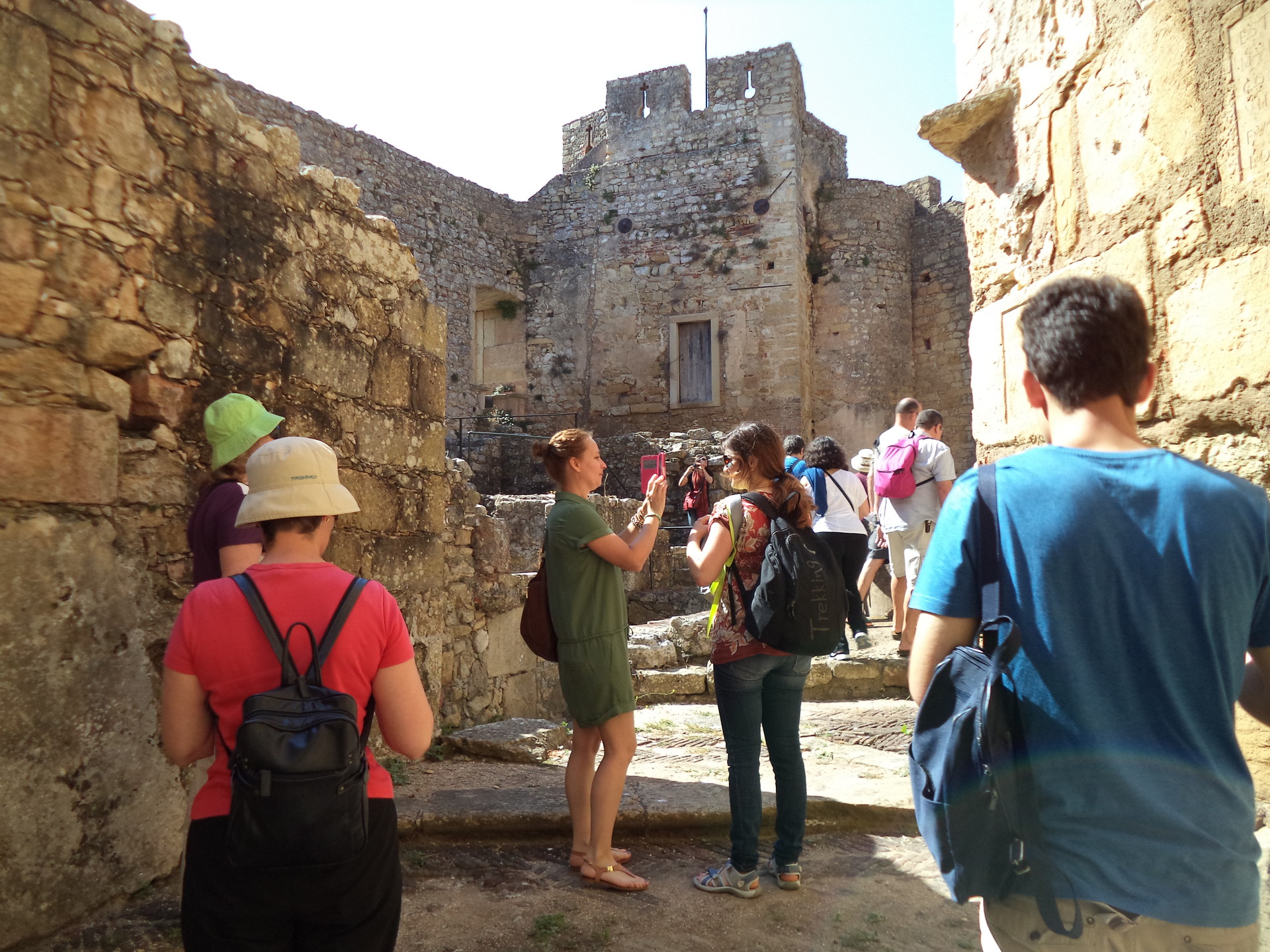
Inside View of the Castle - July 2016.
When to visit?
You can visit it during the whole year. But try to avoid the hottest season (June-September), since it's a big site and it's an open area, you don't always have a shadow where you can rest. When I went to visit it was in July, during the lunch time, and the weather was really hot, and that slowed down the walk's rhythm.
How much does it cost?
The visit to the Convent of Christ costs 6€. However there are some discounts for young people: you just need to show your Student's card or Young's Card, the entrance ticket has a 50% discount showing those. The first Sunday of every month, is a great day to visit, because the entrance is free. Like some others museums or cultural sites in Portugal, usually this is the day with free entrance.
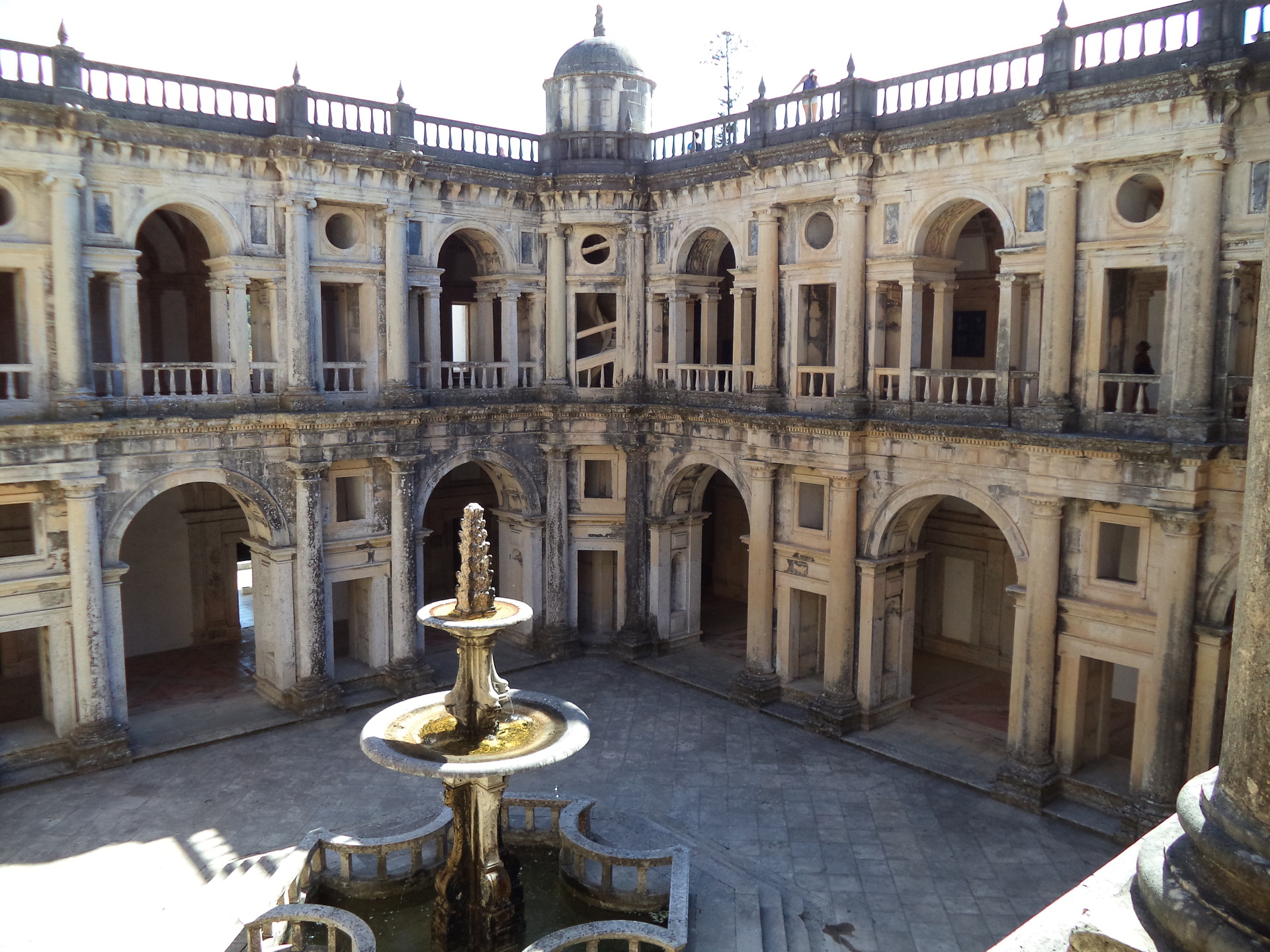
Inside View of the Baroque's Cloister - July of 2016.
Final Considerations:
Without a doubt, this place deserves to be visited, not only because it can be a great history class, but also because of its natural beauty. It's a place that you can't skip, if you're passing throw this part of the country. You can't skip it!
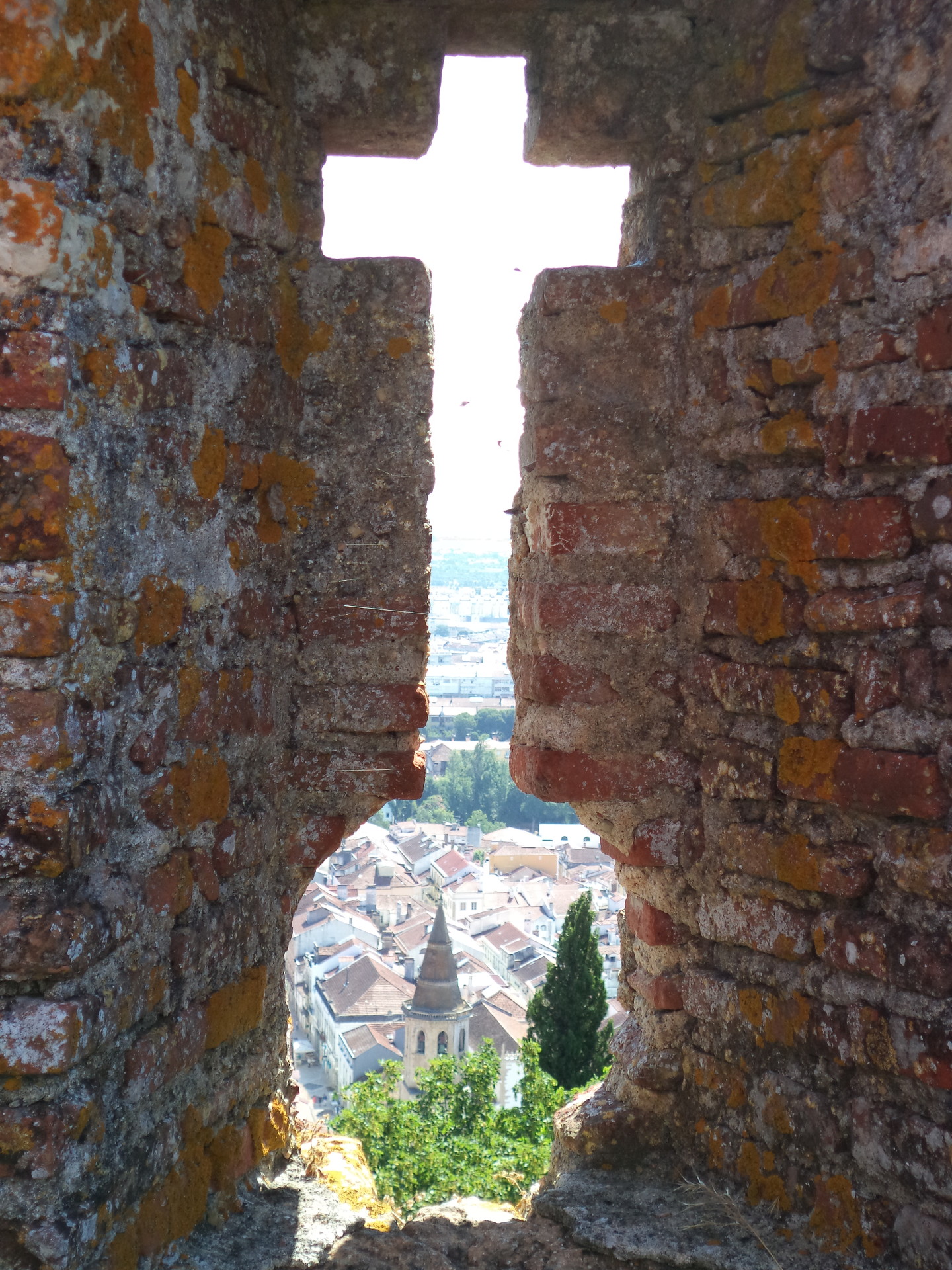
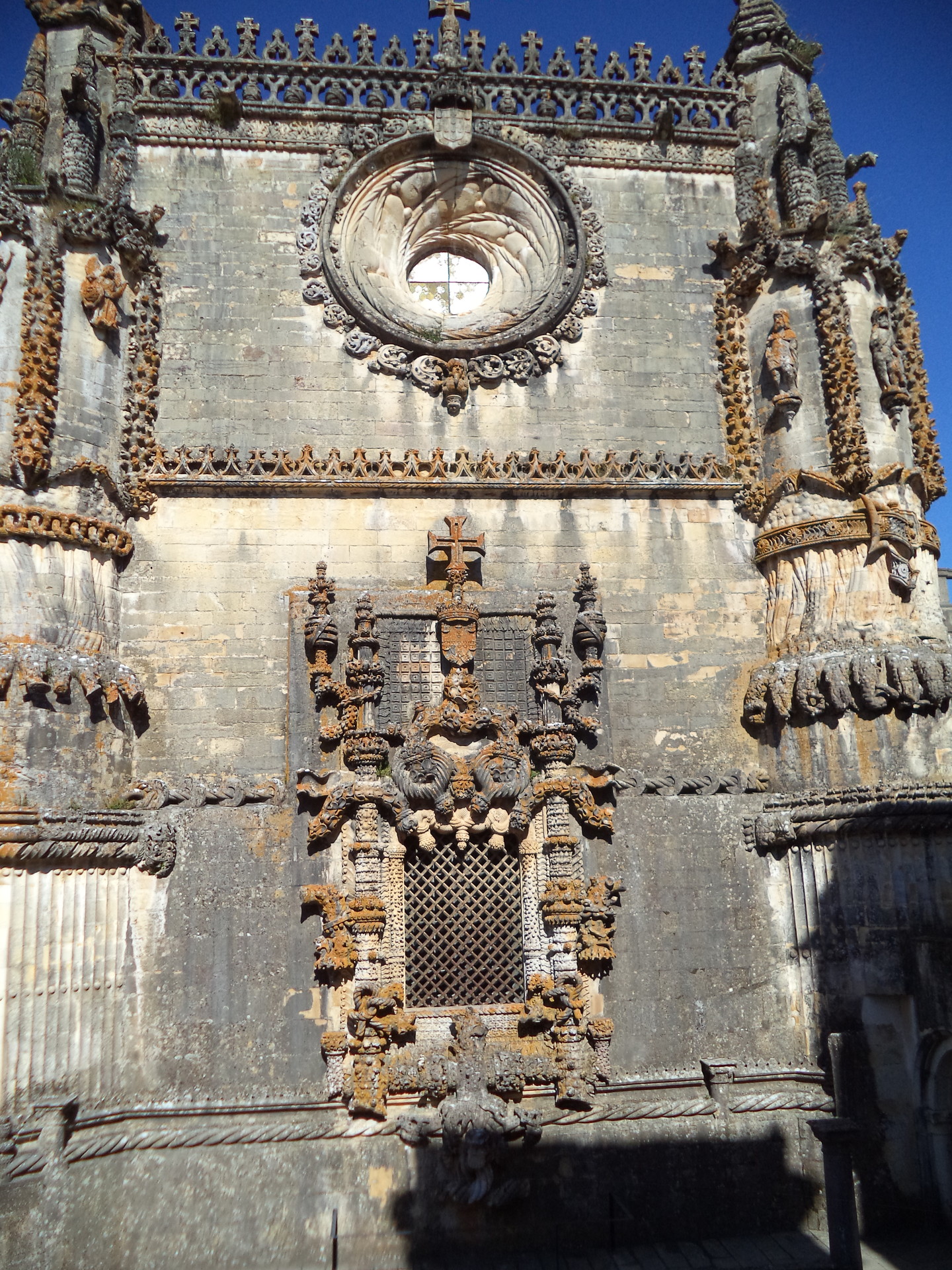
Photo gallery
Content available in other languages
- Português: Uma pérola arquitectónica em Tomar!
The biggest and the best Convent in Portugal!
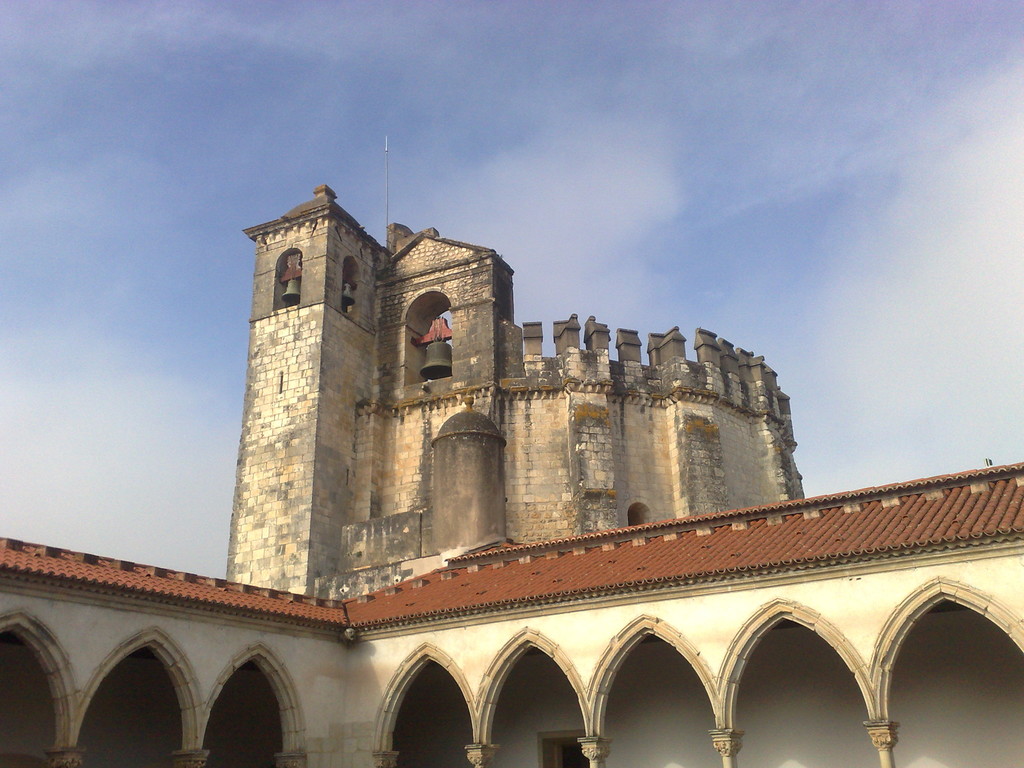
We keep going to talk about the fantastic monuments in Portugal, this time I will talk about the Convent of Christ, located in the city of Tomar. It has six Cloisters, and the Convent of Christ is one of the must see in Portugal.
How to arrive?
The best way to arrive from Coimbra, Porto or Lisbon, is with car, if you don't have one you can look for alternative ways, like sharing a car, with Amovens or BlaBlaCar.
The best option by car is by highway A1 and then you have to do a small detour to arrive in Tomar.
If you want you can also go by train, for what I saw, from Coimbra, you can go by the regional train up to the Lamarosa station, (regional Coimbra- Entroncamento) and then you can change trains in there, and get one as far as Tomar. If you are less than 25 years, or if you're a student, you will have a ticket discount, and the final price will be around 8 euros.
The bus is another option, with Rede Expressos Company, that usually the ticket costs 10 euros, if it's from Coimbra or Lisbon. If you're coming from Leiria the ticket will cost 6 or 7 euros, but it's a bit expensive, so I would recommend you to come from Coimbra or Lisbon, because 10 euros for the ticket is really good, on the other hand, the other routs are shorter, but are expensive considering the distance.
History:
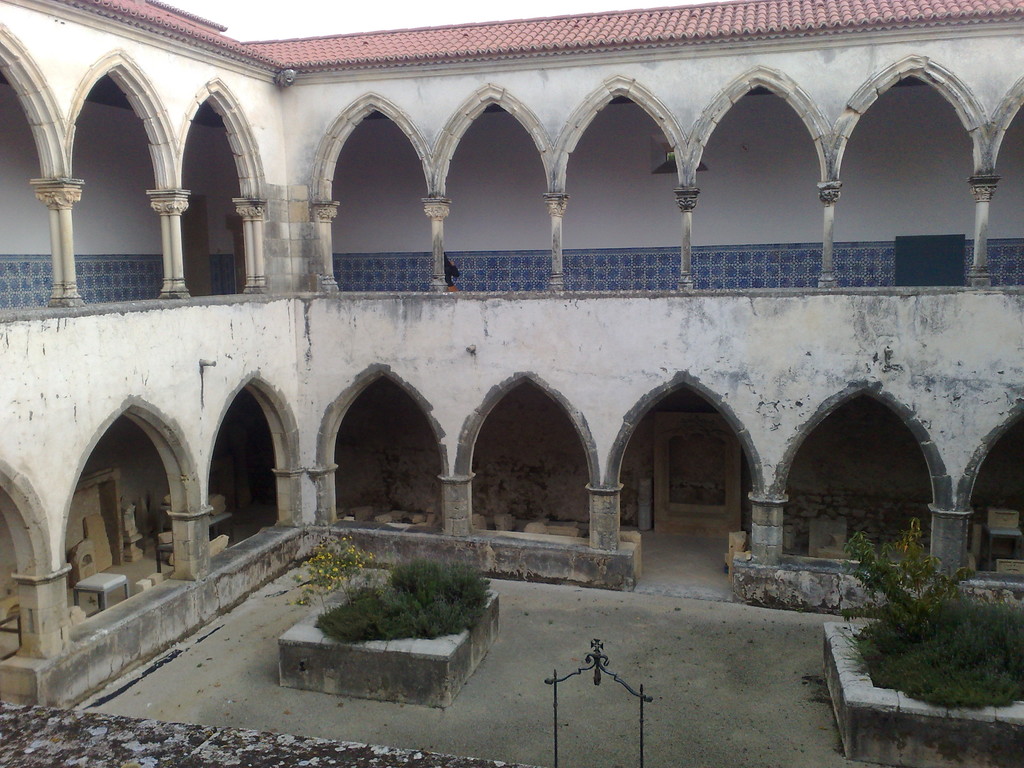
The origin of the Convent of Christ is related with the Castle, that remounts to the 12 century. I don't like to repeat myself very much, but this Castilians had a really good defense against the Moors, because as the Portuguese and the Christian Kingdoms were moving forward, they were building castles like this one, or the one in Almourol or in Pombal.
Just like the Almourol's Castle, this one used to belong also to the Templar Order, and it was right on this site where they implemented the headquarters of the Templars, in the 12th century, until they came to their end. The continuation of the Christs Order is really similar with the other one, and this one implemented their headquarters here in 1357. Its architectural style is Romasnesque, just like the Castles of Almourol and Pombal.
The Convent passes through reformulations until the 15th century, thanks to the reforms of the Infant D. Henrique, the Sailor, that was the one to bring the Gothic Architectonic Style, transforming the place in a real Convent. In the following centuries several styles were added, in the 16th century the Manuelin style, which is a style that only exists in Portugal, and that stands out for it's Manuelin windows, one of the parts of interest in the Convent. Also the styles of Renaissance and Baroque, 17th and 18th century were added.
In 1834 the religious orders were extincted, besides the Order of Christ still existed by the name of "Honorific Order". In that century, the Count of Tomar, Count Costa Cabral, became the head, and thanks to that, since 1843 this site is part of the Cultural Foundation of the Financial Minister.
In 1983 the site was declared as Humanity Heritage by UNESCO, and in 1986 became part of the Minister of Culture. In 2007 it competed in the competition for the 7 Wonders of Portugal, but didn't win. Also, other similar castle got into the competition the Castle and the Walls of Óbidos. But right now I'm going to talk about another wonder that should had got in the competition, but unfortunately didn't.
The Convent:
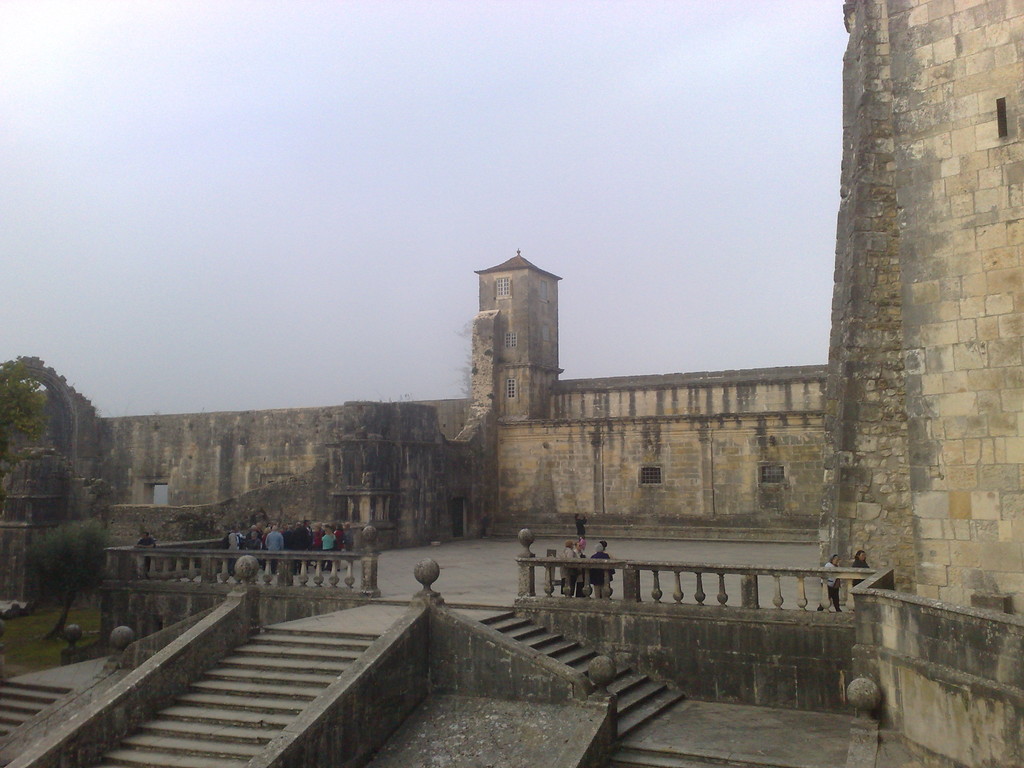
The Castle is on the top of a hill, and before you arrive to the place, you can see the walls of the ancient Castle that are in great condition, just like the remains of the Tower of "Menagem".
When you get in, you will see a little garden and a huge courtyard, and this is the best place to take pictures to the outside of the Convent, and also to see the view through the city of Tomar and to Nabão's River. Keep going with the path you will get in to the Convent.
The visit consists mostly of seeing six Cloisters of the Convent and the inner Church. First you're going to visit the Gothic Cloisters, inaugurated by the Infant D. Henrique, this cloisters are known as: "Washing Cloister" and the "Cemetery's Cloister". The last one is really well mantained, but the "Washing Cloister" could be a bit improved, as for example painting and also the underground floor (that can't be visited). You can see this Cloister in the second picture.
Continuing with the visit you will pass through the Manueline Church, that is inside of the Convent. Here you can see the different parts of the Church, but the most beautiful (for me) it's the Ambulatory's Convent. It was recently restored in December of 2013.

The Church is called Manuelina because it was built by the King D. Manuel I between 1510 and 1525 and it was when most of the constructions in the enclosure happened. In the main nave of the church there are eight faces, and in the exterior there are sixteen. The truth is that this is a marvelous place, and with a big quantity of paintings.
As we continue, you will pass through the main Cloister, that was built by João de Castilho, during the kingdom of the King D. João III. This is the place that takes the longest to be seen because you have to many things to watch. There are spiral staircases that connect to the upper floor where you can see a fountain in the middle of the Cloister. You can go throw the stairs of the Main Cloister, and then reaching the top you will find something really important, that is just right next to a Charola and it's the iconic Chapterhouse Window.
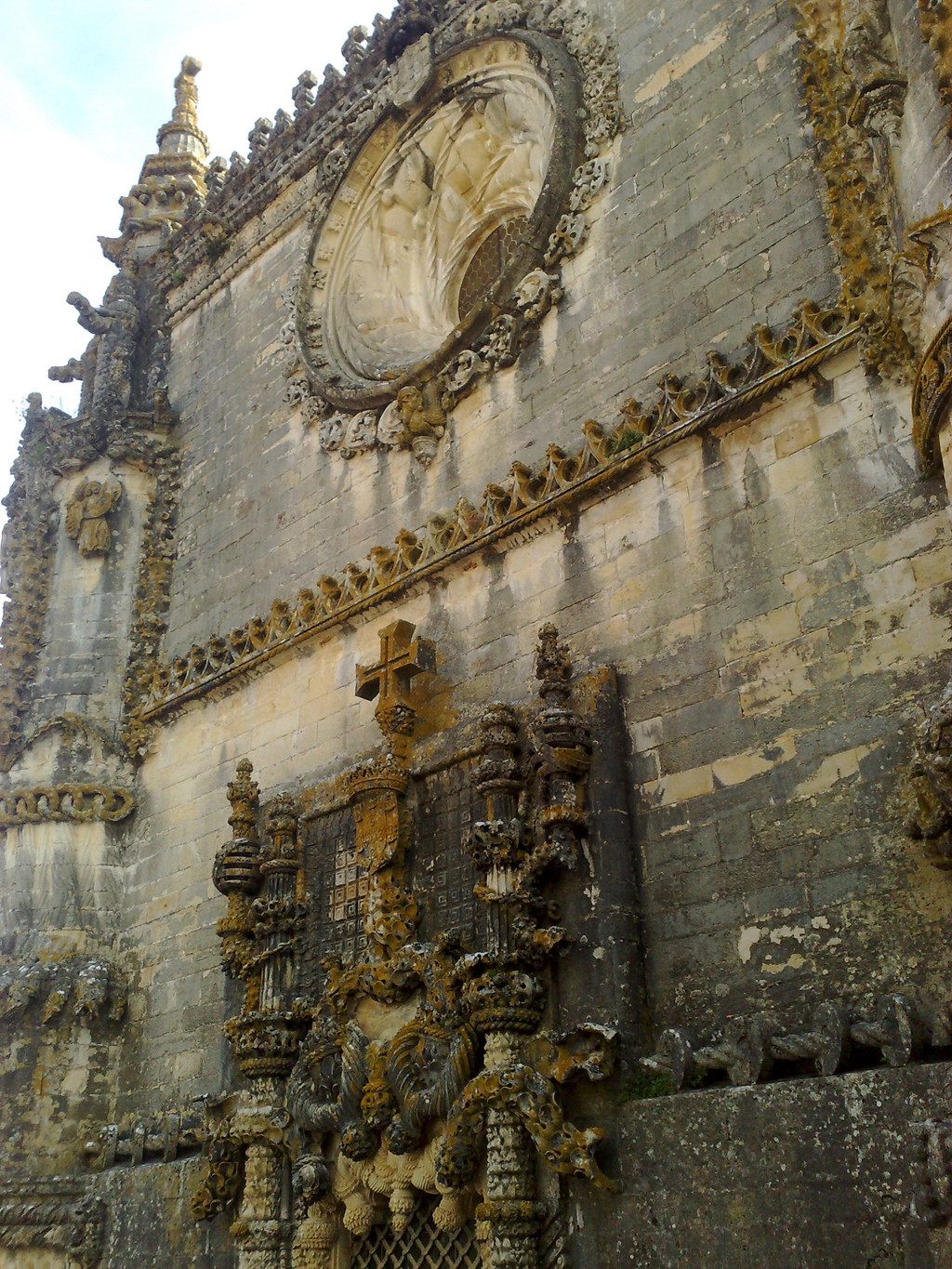
The truth is that this is a real spectacle, and a marvelous big site to be contemplated, it's a unique place. In the top of the Main Cloister you can take thousand of photos, as well as enjoying the view throw the Seven Hills National Forest - "Mata dos Sete Montes".
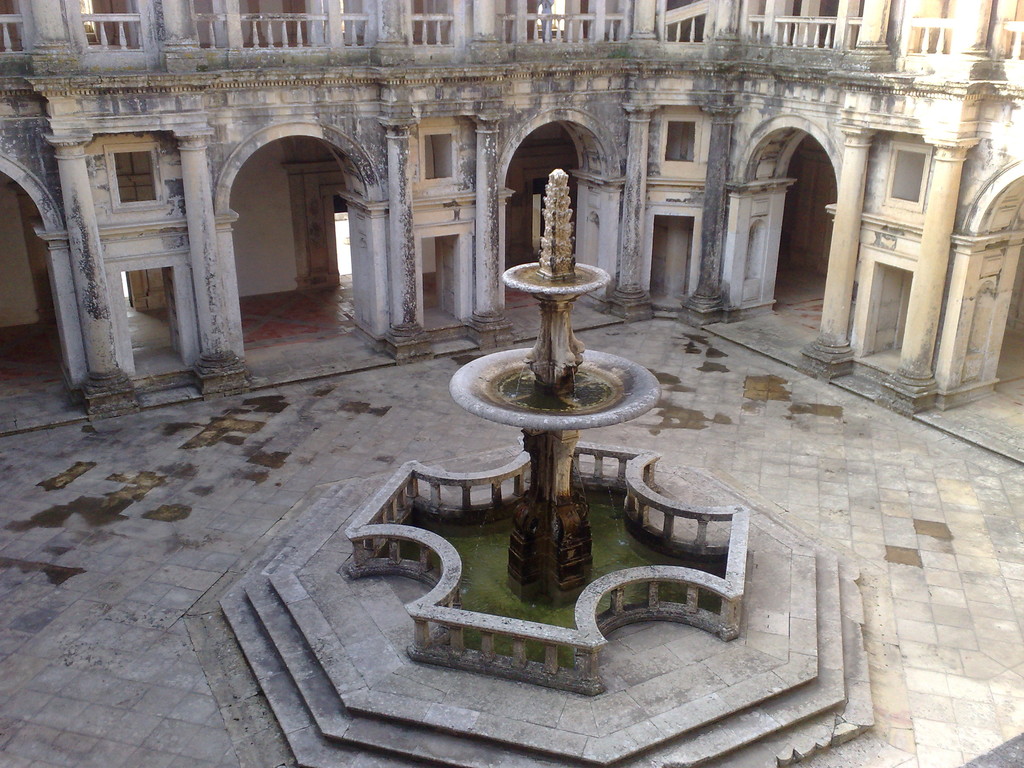
In the Main Cloister, the Cloister of D. João III, you can see the place that used to be the Convent's Orchard, and where nowadays are the gardens. Keep going with the visit, you will arrive to a big hall that used to be the place where the monks slept, some of the rooms are still open, so you're able to see their little rooms, but besides that there is nothing else.
Either through the Main Cloister, or through one of those rooms of the corridor, you will go to the next Cloister, known as Cloister of Saint Bárbara and also the Cloister of the Lodging. The Cloister of Saint Bárbara doesn't stand out that much, comparing to the other one, but it has a privilege place to see the Chapterhouse Window because you can see it really close, and it's perfect to take a picture. Formerly this place was only allowed to the monks.
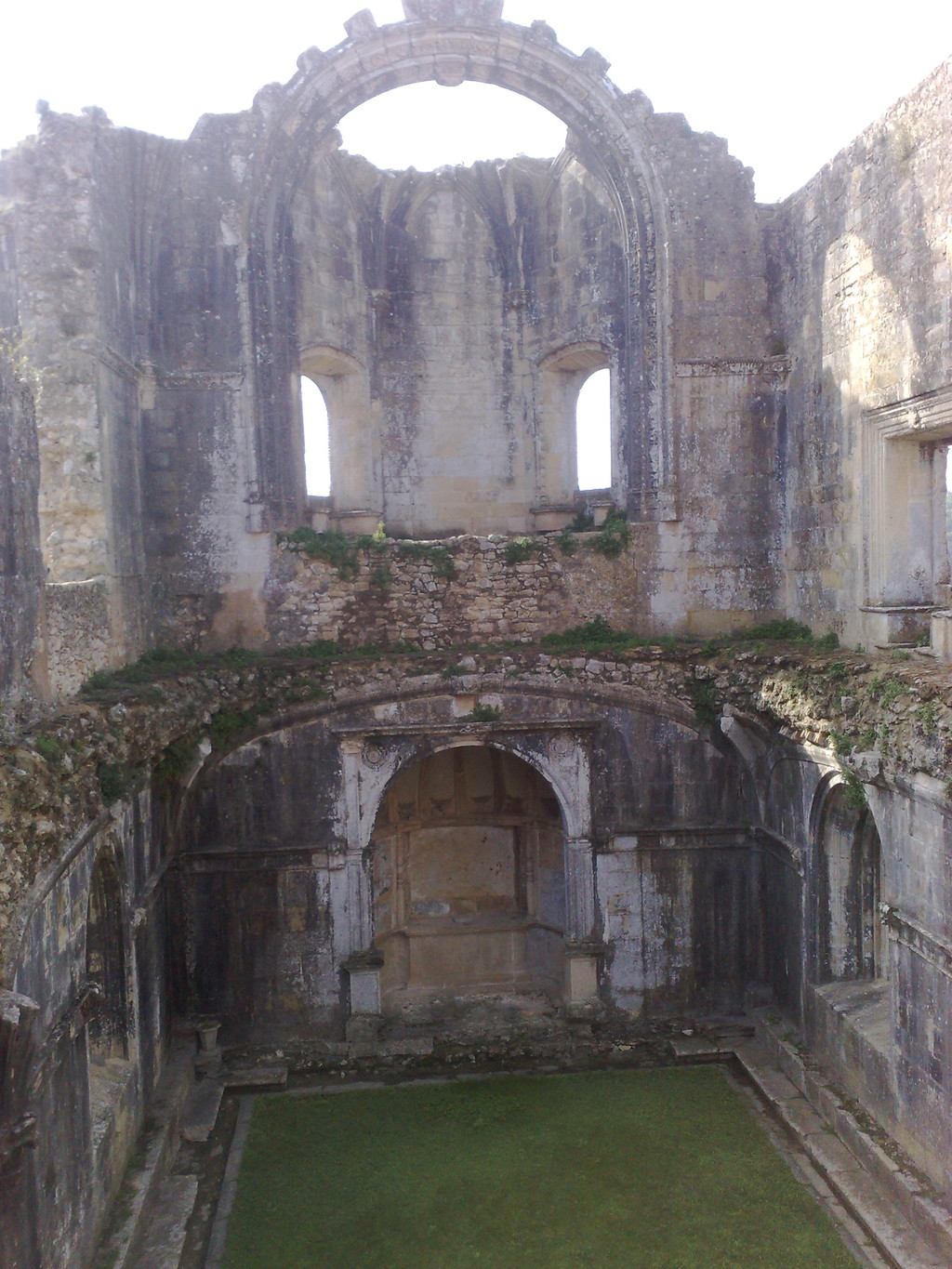
The Cloister of the Lodging, as its name implies, was to receive the pilgrims and the visitors. The ground floor was for the servants and the low-class people, while upstairs was for the nobility and clergy. If I'm not wrong, from here you can go to the Chapter (see it in the picture above), it is presumed to have been the place where D. Philip II made his oath. This Chapter, that was never finished, looks like an abandoned place.
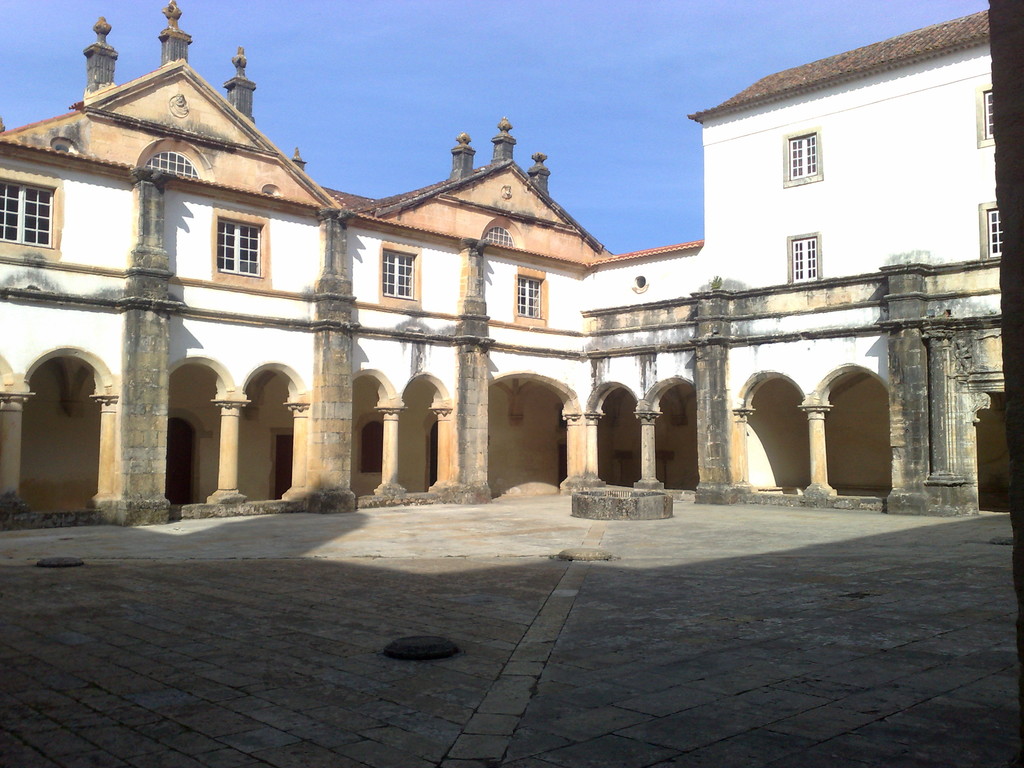
And lastly, we can't forget to talk about the Cloister of "Micha" and of the "Crows", and since I barely had time, I saw them really fast. In the picture above you can see the Cloister of Micha. Both are in good condition, although that the Cloister needs to be restored. The Cloister of the Crows stands out for its little garden, and close to it you can see a coffee shop. Both Cloisters have a small well, and that is what stands out comparing to the others.
Then you have the exit. To be honest this place is really worth it, and I really enjoyed to see something so monumental, beautiful and historical. Although you can't see most of the rooms, that for example, in the Jerónimos Monastery you can see a lot of places, and here you find some empty, and in Jerónimos everything is really well used.
The schedule of the Convent in Winter, is from 10am. until 5:30pm. , and during the Summer is open until 6:30pm. The truth is that Portugal, in my opinion, should have schedules more similar to Spain.
Regarding the entrance tickets, it costs 6 euros, but if you're a student you will only pay half, so don't forget to take your card, and also they have really good discounts for groups.
Concluding, the Convent of Christ is really beautiful and unique, if you're in Portugal during Erasmus, you can't skip this place, no matter what, because it's really worth it.
The visit can last about two or three hours, and then if you want you can visit the city of Tomar, but I don't think is something that interesting, although it has a Synagogue, some Churches and also the amazing view through the Nabão's River.
The Convent of Christ must be on your top list of places to visit!
Photo gallery
Content available in other languages
- Español: El mayor y mejor convento de Portugal
- Português: O maior e melhor Convento de Portugal
- Italiano: Il maggiore e migliore convento del Portogallo
Rate and comment about this place!
Do you know Convent of Christ!? Share your opinion about this place.




























